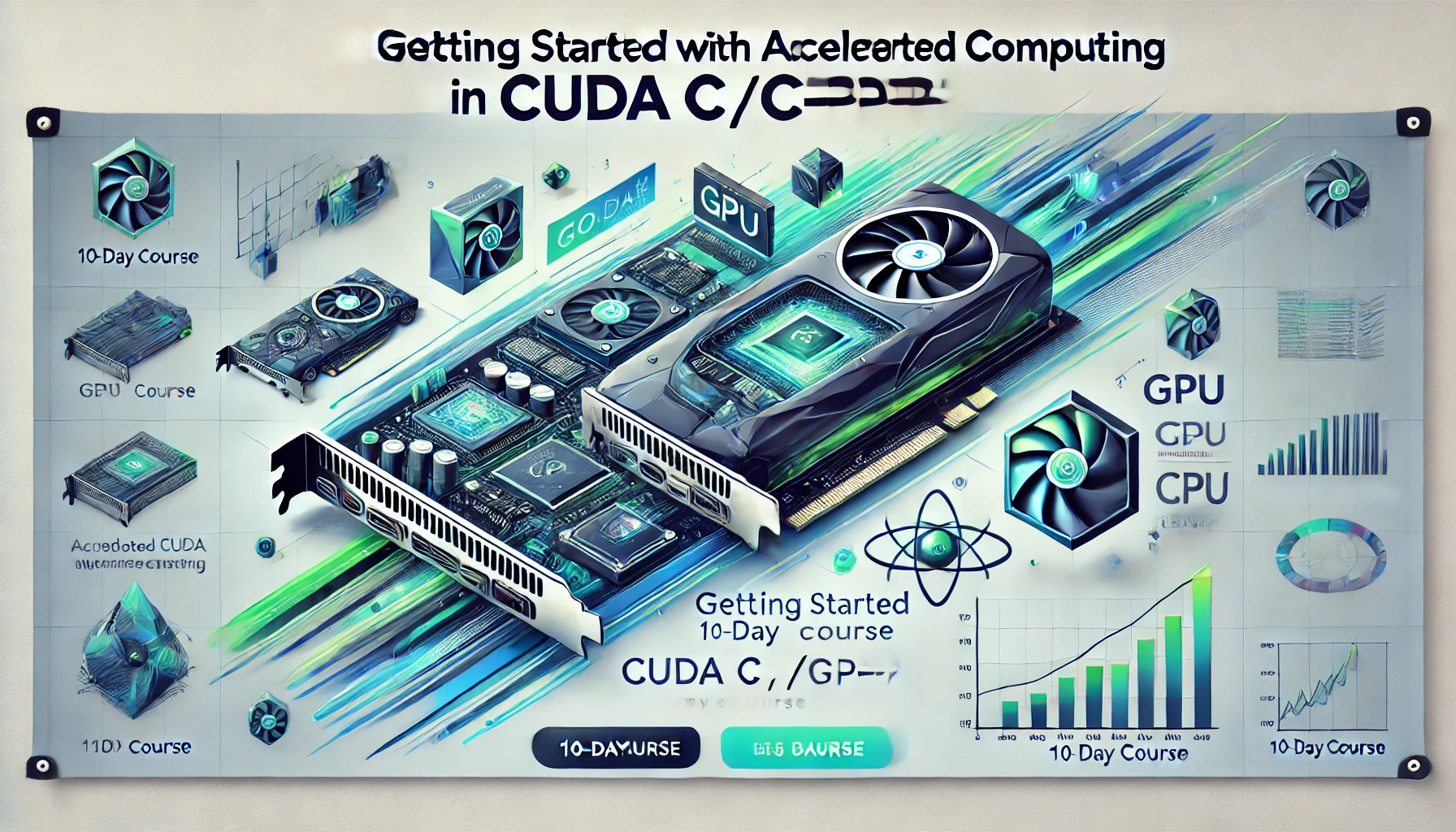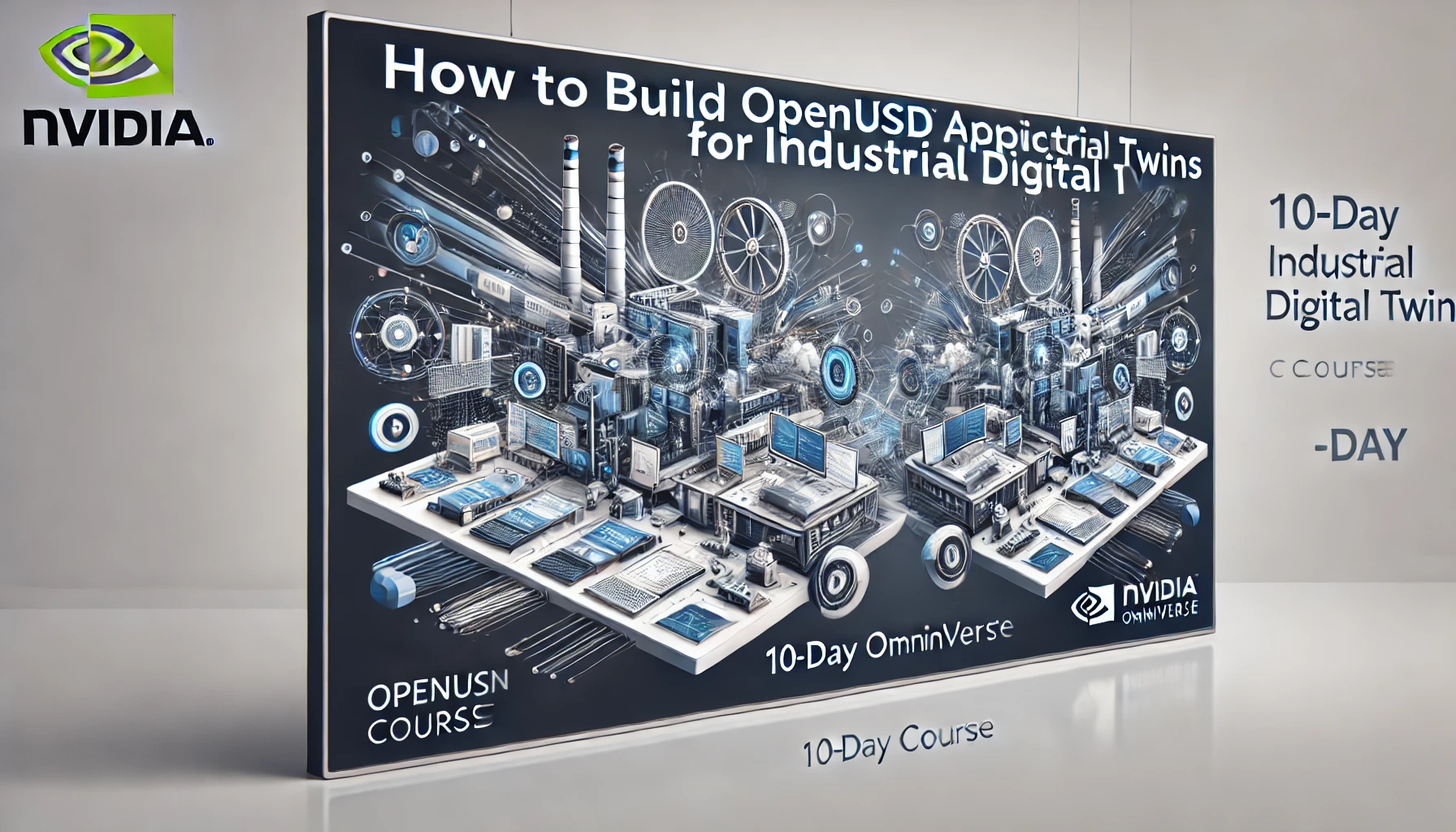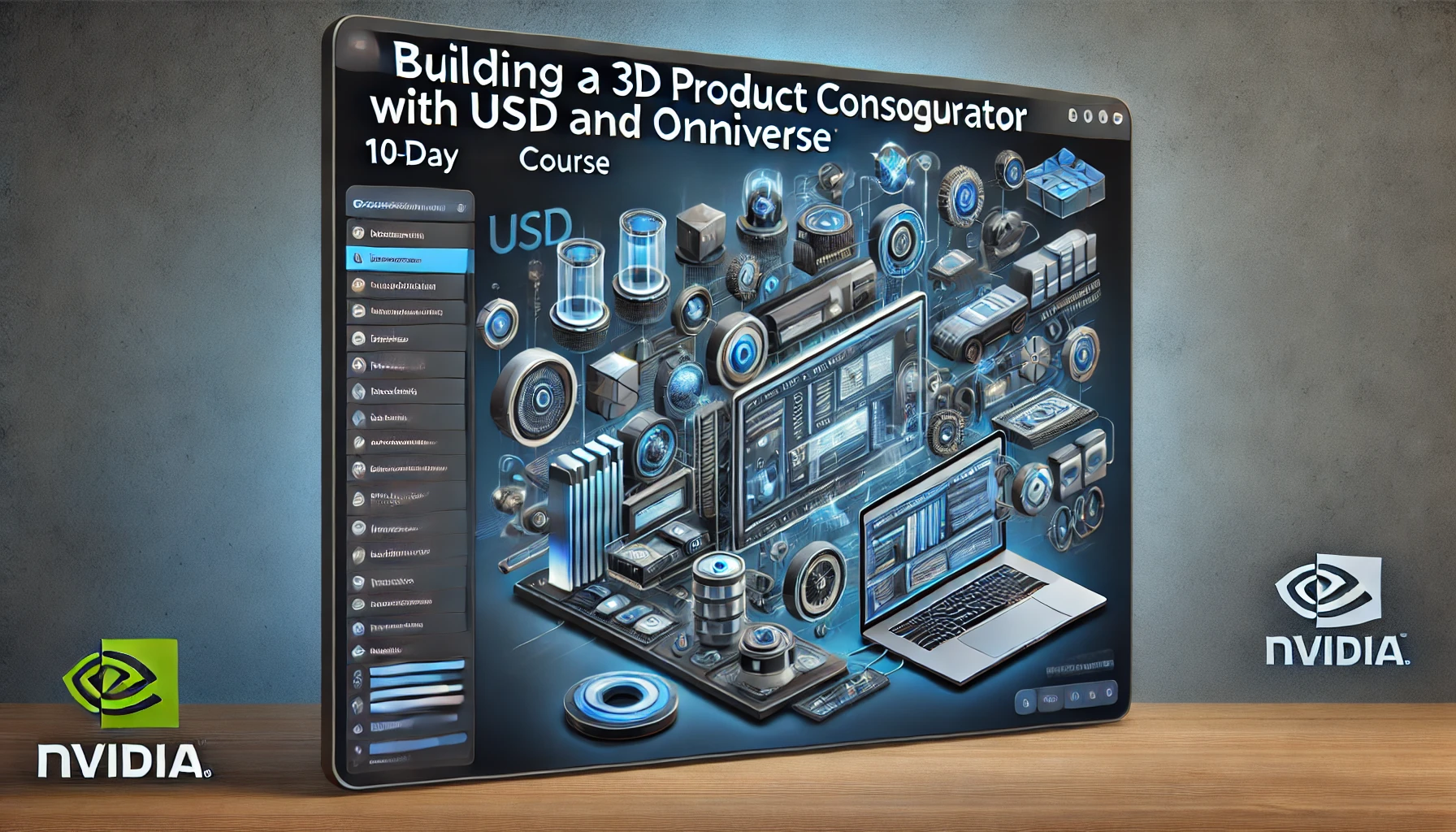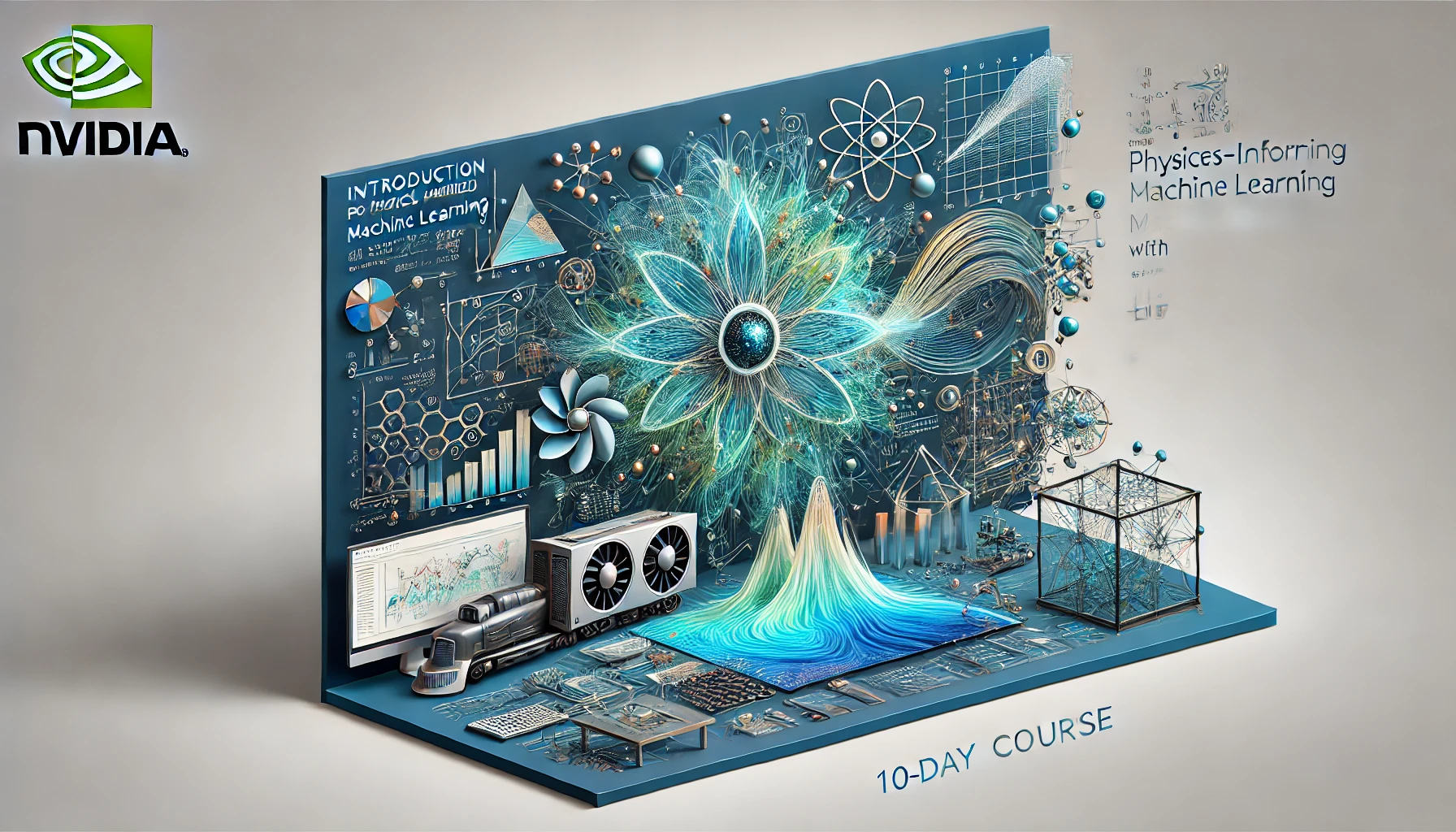Getting Started with Accelerated Computing in CUDA C/C++
1. About the Course
“Getting Started with Accelerated Computing in CUDA C/C++” is a comprehensive 10-day course designed to introduce developers and engineers to the world of GPU-accelerated computing using CUDA C/C++. As the demand for high-performance computing continues to grow, CUDA has become an essential tool for developers looking to harness the power of GPUs to accelerate computational tasks. This course focuses on the fundamentals of CUDA programming in C/C++, as well as the use of NVIDIA Nsight Systems to profile and optimize GPU-accelerated applications.
Throughout this course, participants will gain hands-on experience in writing, profiling, and optimizing CUDA C/C++ code. They will learn the core concepts of parallel programming, understand how to map algorithms to GPUs, and utilize Nsight Systems to identify performance bottlenecks. By the end of the course, participants will have a solid foundation in CUDA programming and be equipped to develop high-performance applications that fully leverage the capabilities of modern GPUs.
2. Learning Objectives
By the end of this course, participants will be able to:
- Understand the basics of GPU-accelerated computing with CUDA: Gain a solid understanding of how GPU acceleration works and how CUDA C/C++ can be used to develop high-performance applications.
- Write and compile CUDA C/C++ code: Develop efficient CUDA kernels and manage GPU memory using C/C++.
- Optimize CUDA applications: Apply best practices for optimizing memory usage, data transfers, and parallel execution in CUDA applications.
- Profile applications using NVIDIA Nsight Systems: Learn how to use Nsight Systems to profile CUDA applications and identify performance bottlenecks.
- Develop parallel algorithms: Design and implement parallel algorithms that take full advantage of GPU architecture.
- Integrate CUDA into existing C/C++ projects: Seamlessly integrate CUDA C/C++ code into existing projects to enhance performance.
3. Course Prerequisites
This course is designed for developers with a basic understanding of programming and computing. The prerequisites include:
- C/C++ Programming: A strong grasp of C/C++ programming, including knowledge of syntax, memory management, pointers, and object-oriented principles.
- Basic Understanding of Parallel Computing: Familiarity with the concepts of parallel computing and threading, although no prior CUDA experience is necessary.
- Experience with Linux/Command Line Interface: Proficiency with the Linux operating system and command-line tools, as most CUDA development is performed in a Linux environment.
- Mathematics: A good understanding of mathematics, particularly linear algebra and matrix operations, which are commonly used in high-performance computing applications.
4. Course Outlines
This course is structured to progressively build your expertise in GPU-accelerated computing with CUDA C/C++ and Nsight Systems. The content is organized as follows:
- Introduction to GPU-Accelerated Computing: Overview of GPU acceleration, CUDA architecture, and the benefits of using CUDA for high-performance computing.
- Setting Up the CUDA Development Environment: Installation and configuration of the necessary software tools, including CUDA Toolkit and NVIDIA Nsight Systems.
- CUDA Programming Fundamentals: Introduction to CUDA C/C++ programming, including threads, blocks, and grids, as well as memory management techniques.
- Writing Your First CUDA Program: Hands-on experience writing and running your first CUDA program, including kernel execution and memory management.
- Optimizing CUDA Programs: Techniques for optimizing CUDA code, including memory coalescing, data transfers, and parallel execution.
- Introduction to NVIDIA Nsight Systems: Learning how to use Nsight Systems to profile and analyze CUDA applications.
- Profiling and Debugging CUDA Applications: Hands-on experience profiling and debugging CUDA applications using Nsight Systems.
- Advanced CUDA Programming Techniques: Exploring advanced CUDA features, including streams, events, and multi-GPU programming.
- Integrating CUDA into C/C++ Projects: Best practices for integrating CUDA C/C++ code into existing projects.
- Capstone Project: A hands-on project that involves developing and optimizing a CUDA-accelerated application using C/C++ and Nsight Systems.
5. Day-by-Day Breakdown
Day 1: Introduction to GPU-Accelerated Computing
- Objectives: Understand the basics of GPU acceleration, CUDA architecture, and the benefits of using CUDA for high-performance computing.
- Topics:
- Overview of GPU-accelerated computing
- Introduction to CUDA and its architecture
- Benefits of using CUDA C/C++ for performance-critical applications
- Activities:
- Reading materials on GPU computing and CUDA architecture
- External link: NVIDIA CUDA Zone
- Internal link: Regent Studies CUDA Courses
Day 2: Setting Up the CUDA Development Environment
- Objectives: Install and configure the CUDA Toolkit and NVIDIA Nsight Systems for CUDA development.
- Topics:
- Installing the CUDA Toolkit on Linux
- Setting up NVIDIA Nsight Systems
- Configuring the development environment for CUDA programming
- Activities:
- Step-by-step installation and configuration guide
- Verifying the setup with a sample CUDA program
Day 3: CUDA Programming Fundamentals
- Objectives: Learn the basics of CUDA C/C++ programming, including threads, blocks, grids, and memory management.
- Topics:
- Understanding CUDA threads, blocks, and grids
- Memory management in CUDA: global, shared, and constant memory
- Writing CUDA kernels and launching them from C/C++ code
- Activities:
- Hands-on exercises to explore CUDA programming fundamentals
Day 4: Writing Your First CUDA Program
- Objectives: Write, compile, and run your first CUDA C/C++ program, focusing on kernel execution and memory management.
- Topics:
- Basic syntax and structure of CUDA programs
- Writing a simple CUDA kernel
- Managing memory transfers between host and device
- Activities:
- Write and test a simple CUDA program, analyze its performance
Day 5: Optimizing CUDA Programs
- Objectives: Learn techniques to optimize CUDA C/C++ code for better performance on GPUs.
- Topics:
- Optimizing memory access patterns and coalescing
- Minimizing data transfer overhead between host and device
- Parallel execution and synchronization in CUDA
- Activities:
- Implement and benchmark optimizations in a CUDA program
Day 6: Introduction to NVIDIA Nsight Systems
- Objectives: Learn how to use NVIDIA Nsight Systems to profile CUDA applications and identify performance bottlenecks.
- Topics:
- Overview of NVIDIA Nsight Systems
- Setting up and using Nsight Systems for profiling
- Analyzing application performance with Nsight Systems
- Activities:
- Profile a sample CUDA program using Nsight Systems
Day 7: Profiling and Debugging CUDA Applications
- Objectives: Gain hands-on experience in profiling and debugging CUDA applications using Nsight Systems.
- Topics:
- Identifying and resolving performance bottlenecks
- Debugging common issues in CUDA programs
- Using Nsight Systems to profile and optimize performance
- Activities:
- Debug and optimize a CUDA application using Nsight Systems
Day 8: Advanced CUDA Programming Techniques
- Objectives: Explore advanced CUDA features, including streams, events, and multi-GPU programming.
- Topics:
- Working with CUDA streams and events for concurrency
- Multi-GPU programming techniques
- Best practices for advanced CUDA programming
- Activities:
- Implement advanced CUDA programming techniques in a sample application
Day 9: Integrating CUDA into C/C++ Projects
- Objectives: Learn best practices for integrating CUDA C/C++ code into existing projects to enhance performance.
- Topics:
- Integrating CUDA code with existing C/C++ projects
- Managing build systems and dependencies
- Ensuring compatibility and performance in integrated projects
- Activities:
- Integrate CUDA code into a sample C/C++ project and analyze the performance
Day 10: Capstone Project
- Objectives: Apply all the knowledge gained throughout the course to develop and optimize a CUDA-accelerated application using C/C++ and Nsight Systems.
- Topics:
- Project planning and design
- Coding, profiling, and optimizing the application
- Presenting the project and discussing the results
- Activities:
- Work on a real-world CUDA project, profile and optimize it using Nsight Systems
6. Learning Outcomes
By the end of “Getting Started with Accelerated Computing in CUDA C/C++,” participants will be able to:
- Develop GPU-accelerated applications using CUDA C/C++: Confidently write and optimize CUDA C/C++ code to leverage GPU acceleration for high-performance computing.
- Optimize CUDA applications for better performance: Apply techniques to optimize memory usage, data transfers, and parallel execution in CUDA applications.
- Use NVIDIA Nsight Systems for profiling: Effectively use Nsight Systems to profile and analyze CUDA applications, identifying and resolving performance bottlenecks.
- Implement advanced CUDA programming techniques: Utilize advanced features such as streams, events, and multi-GPU programming to develop more efficient applications.
- Integrate CUDA into existing C/C++ projects: Seamlessly integrate CUDA code into existing projects, ensuring compatibility and enhanced performance.
- Complete a real-world CUDA project: Demonstrate your ability to develop and optimize a complete CUDA-accelerated application through a capstone project.
Participants will finish the course with a strong understanding of GPU-accelerated computing, practical experience in CUDA programming, and the ability to optimize and profile applications using NVIDIA Nsight Systems. This course is an essential step for anyone looking to specialize in high-performance computing and CUDA development.
This course outline is designed to be engaging, informative, and structured to ensure that participants gain the necessary skills to excel in GPU-accelerated computing with CUDA C/C++. Whether you are aiming to enhance your current projects or expand your skill set, this course provides the tools and knowledge to help you succeed.




